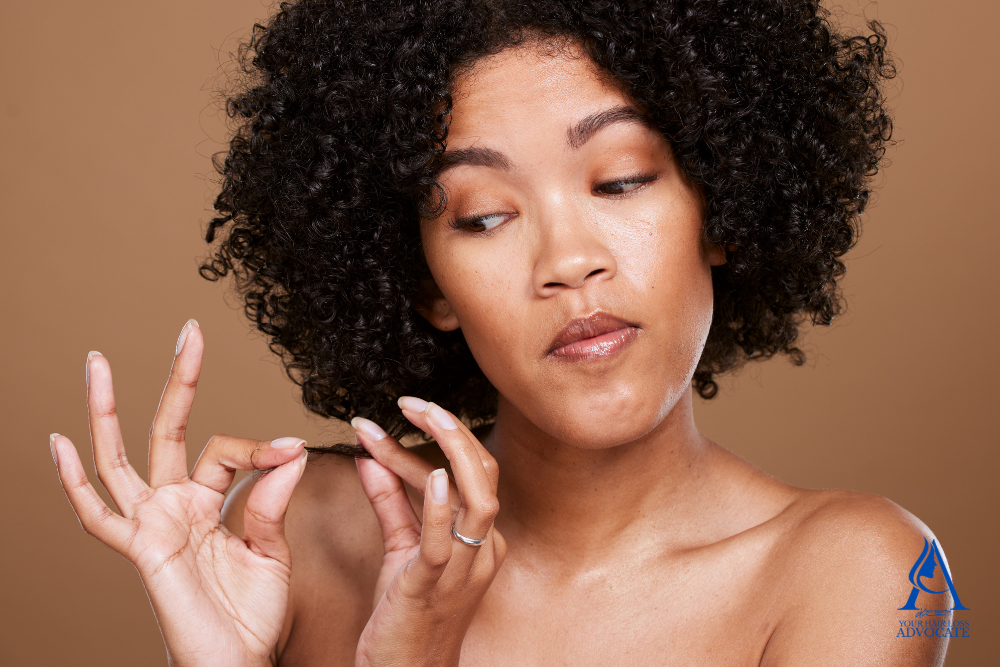What Your Dermatologist Overlooked — And Why Functional Trichology is Different
She did everything the dermatologist told her.
She stopped the relaxers, put down the bleach, swore off heat tools, swapped chemical-laden products for “natural” alternatives. The message was clear: her hair was over-processed, and the only way to save it was to cut the chemicals and wait.
So she did.
And months later? Her hair is still falling. Her edges are thin, her crown patchy, her scalp feels raw some days, oily and clogged the next. She’s standing in front of the mirror trying to understand why doing all the “right” things still hasn’t brought the relief she thought it would.
If that’s you, you’re not imagining things — and you’re not failing at your hair journey.
Why Going Natural Isn’t Always the Solution
Look, there’s absolutely truth in the fact that chemical overprocessing weakens hair fibers, breaks disulfide bonds, and makes strands more prone to snapping. That’s well documented.
But what most dermatologists never explain is this:
When hair is falling at the root — when you see a bulb attached — the issue was set in motion long before you ever picked up that flat iron or dye bottle.
Because true hair growth or shedding is dictated by what’s happening inside your body, at the level of your blood, your hormones, your nervous system. It happens in the dermis, the middle layer of your skin, where tiny capillaries bring oxygen, nutrients, and molecular signals to your follicles.
No topical product, and no pause in chemicals, can fix what your internal systems are still struggling to keep up with.
Why Your Hair Is Still Falling (Even Without Chemicals)
This is where so many women get stuck, left to blame themselves or keep hunting for external causes. The truth?
It’s rarely about the shampoo, the twist-out, or the absence of relaxer. It’s about the burden on your internal systems that’s still unresolved — that’s continuing to compromise your hair’s lifecycle.
You might have:
- Blood sugar imbalances quietly disrupting cellular energy and follicle turnover
- Chronic stress overfiring your adrenals and starving your scalp of circulation
- Thyroid or estrogen shifts after childbirth or with age that stall your growth cycle
- A congested liver struggling to metabolize hormones and toxins, leaving your follicles reactive
This is why so many women experience what studies in the Journal of the American Academy of Dermatology call “poor or short-lived recoveries.” According to research published by the Journal of the American Academy of Dermatology, recurrence rates for female hair loss after conventional treatments can exceed 40-50% within a year.
Why Functional Trichology™ is Never Just About Your Hair
So why trust a Functional Trichologist over a board-certified dermatologist?
The real answer: you don’t have to choose one against the other. You just have to understand their lanes — and what each approach is built to do.
Dermatologists are experts at diagnosing visible scalp conditions and ruling out disease. But their solutions almost always focus on symptoms: steroid creams to shut down inflammation, minoxidil to force a growth phase, statins or antiandrogens to tweak lab numbers.
What these approaches rarely do is ask why your follicles became fragile in the first place. They silence the messenger, leaving the deeper imbalance to carry on — which is exactly why so many recoveries are short-lived or turn into frustrating cycles of yo-yo shedding.
I’m Ky Smith, the innovator behind Functional Trichology™, and I built this discipline because your hair isn’t random — it’s an intelligent signal. Your scalp is the first place your body downregulates when it’s overwhelmed. That means if you’re seeing bald patches, thinner edges, a receding hairline, or persistent shedding despite doing “everything right,” your body is telling you there’s a deeper burden.
Functional Trichology is never just about hair. It’s about methodically investigating how your systems are communicating — your hormones, adrenals, thyroid, gut, liver — to locate the true source of strain that’s compromising your hair from the inside.
What Makes This Approach Different From Anything Else
At the Hair Loss Management Center of Houston, right here in Cypress TX, I use a proprietary model called the Triangle to Recovery™. It’s how I pinpoint exactly what your dermatologist overlooked.
- We look at your stress axis, because cortisol robs your follicles of the microcirculation needed to stay in growth mode.
- We map your nutrient status and gut health, because deficiencies in zinc, iron, amino acids, or absorption issues can sabotage keratin production.
- We evaluate your liver’s ability to metabolize cholesterol into hormones, because sluggish clearance or overproduction changes your entire hormonal conversation.
Then we build a plan that aligns with your physiology — so your body finally stops seeing hair as expendable.
Because I’m not here to override your biology. I’m here to support it back to balance.
Why Women Stay Stuck Without This Clarity
When you only ever treat the hair you can see, or the scalp you can reach, you miss the systems that made it vulnerable in the first place.
This is why so many women who rely exclusively on conventional care find themselves months or years later, back in the same spot — or worse. According to the Cleveland Clinic and the Institute for Functional Medicine notes that up to 70% of women with chronic shedding have underlying systemic imbalances that standard dermatology often misses. The Cleveland Clinic highlights how chronic telogen effluvium frequently ties back to hidden metabolic or hormonal burdens.
So the cycle repeats. New products, new prescriptions, new rounds of hope — all while the root burden inside continues unchecked.
The Bottom Line: Where Do You Go From Here?
Here’s what I want you to know.
You’re not failing because your hair hasn’t bounced back after going natural. You’re simply missing a level of investigation that connects your hair to your whole health — the only way to build recovery that lasts.
That’s what we do through Functional Trichology. It’s how I help women just like you transform quiet fear into informed action, designing a strategy that works with your body’s brilliance instead of suppressing it.
Ready to Find Out What Your Hair is Really Saying?
If your edges are still fragile, your part is widening, or your hair feels like it’s breaking more easily no matter what you do — it’s time to look beyond the surface.
Apply for a complimentary 15-minute Follicle Readiness Call.
We’ll uncover whether your hair loss is tied to unaddressed stress, metabolic strain, or hormone misfires — and whether building a Functional Trichology recovery blueprint is the right next move for you.
Because your hair isn’t just about how you look. It’s about how well your body’s working on the inside — and it deserves a plan that respects that complexity.

